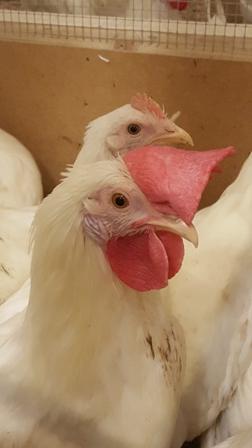Abstract

There are strong links between animal welfare and stress, in the presence of high stress animals will experience decreased welfare. Corticosterone (CORT), the primary stress hormone in chickens, can have detrimental effects on production factors, growth and immune response. Commercial hatcheries may cause a plethora of potential stressors on chickens; like loud noises, rough handling and transportation. The present study explores both acute, chronic effects of hatchery routines on commercial laying chickens and compares differences between sexes. 83 control and 85 hatchery stressed chickens were behavioural tested at <1 week and 6 weeks of age in novel arena tests, tonic immobility (TI) tests and restraint tests. Egg data, feather scoring and gonadal hormone analysis was conducted. The present study shows that acute effects of hatchery routines include; stronger CORT reaction, decreased exploration and comfort behaviours. The chronic effects of hatchery stress include; stronger CORT reaction, increased feather damage, increased comfort behaviours in females, more eggs per day of greater weight. Comparing hatchery males to females: males performed fewer comfort behaviours at 2 days and 6 weeks of age, more vocalisations in TI at 6 weeks, and increased feather damage. In conclusion the present study supports that current hatchery routines has a negative impact on chickens’ early lives. In later life there are positive and negative impacts, with males reacting more severely to hatchery routines than females.
Key words: chicken, stress, commercial, corticosterone, behaviour, production, welfare
Responsible for this page:
Director of undergraduate studies Biology
Last updated:
05/03/18
